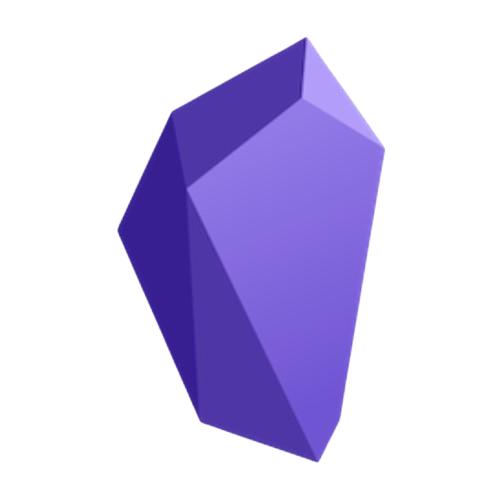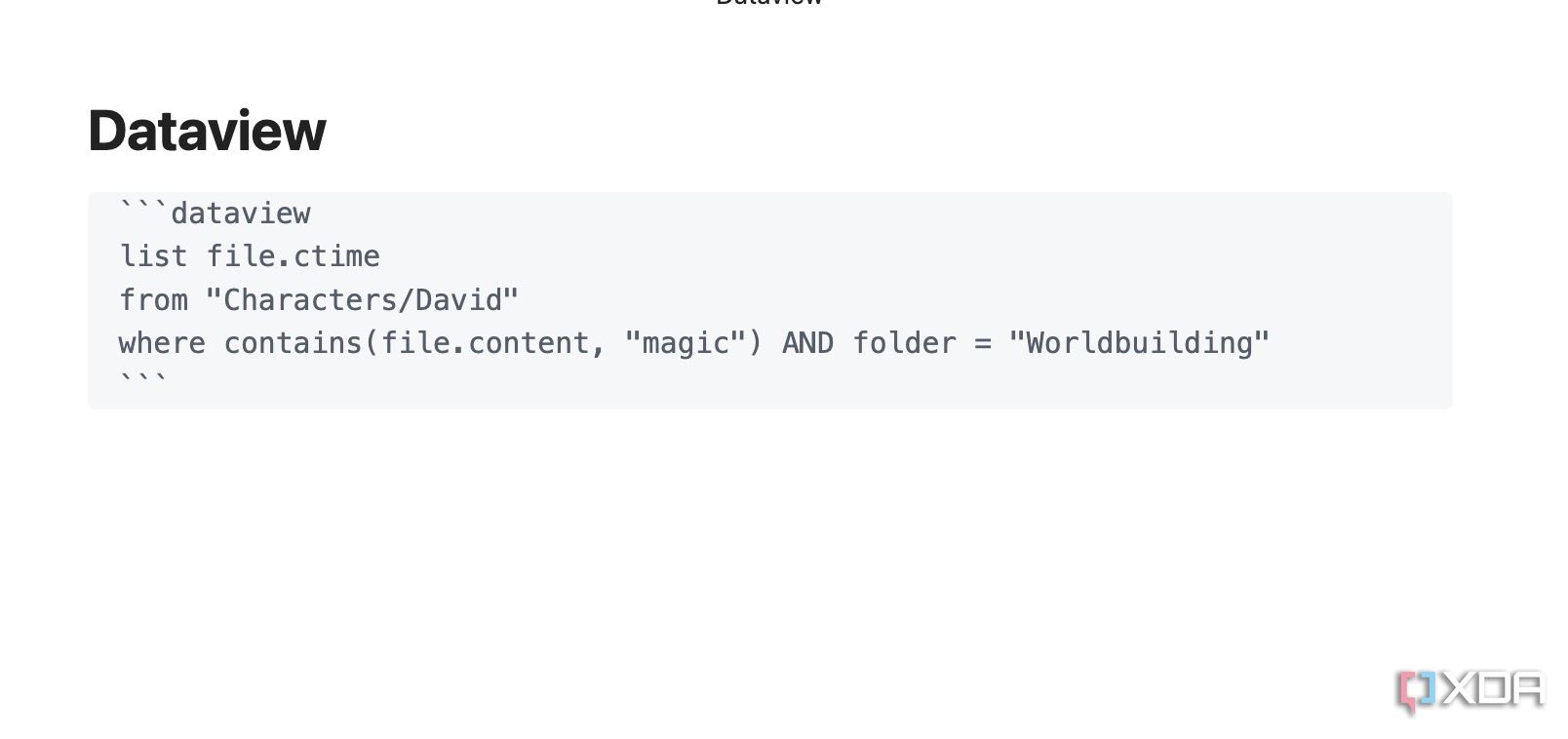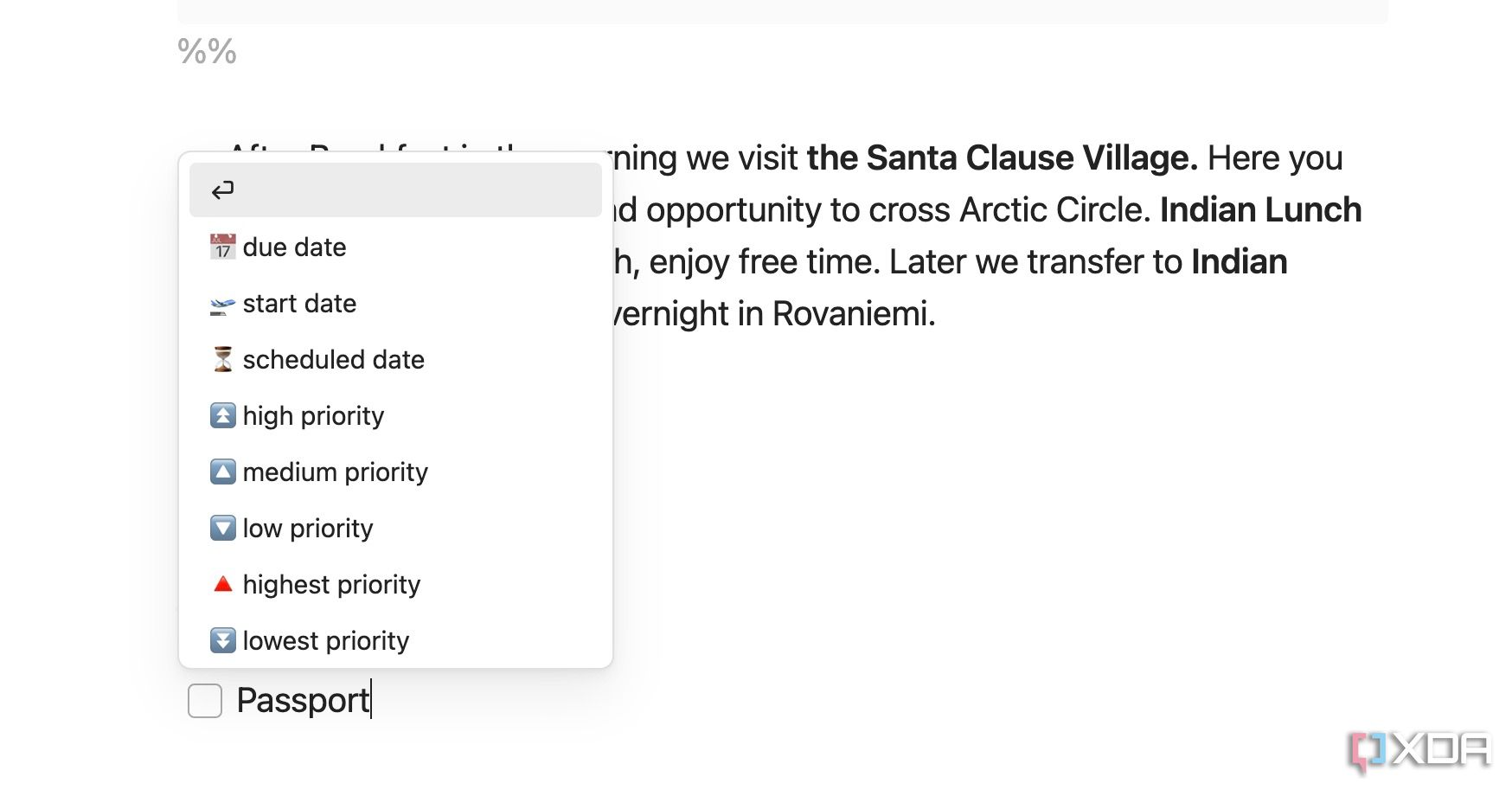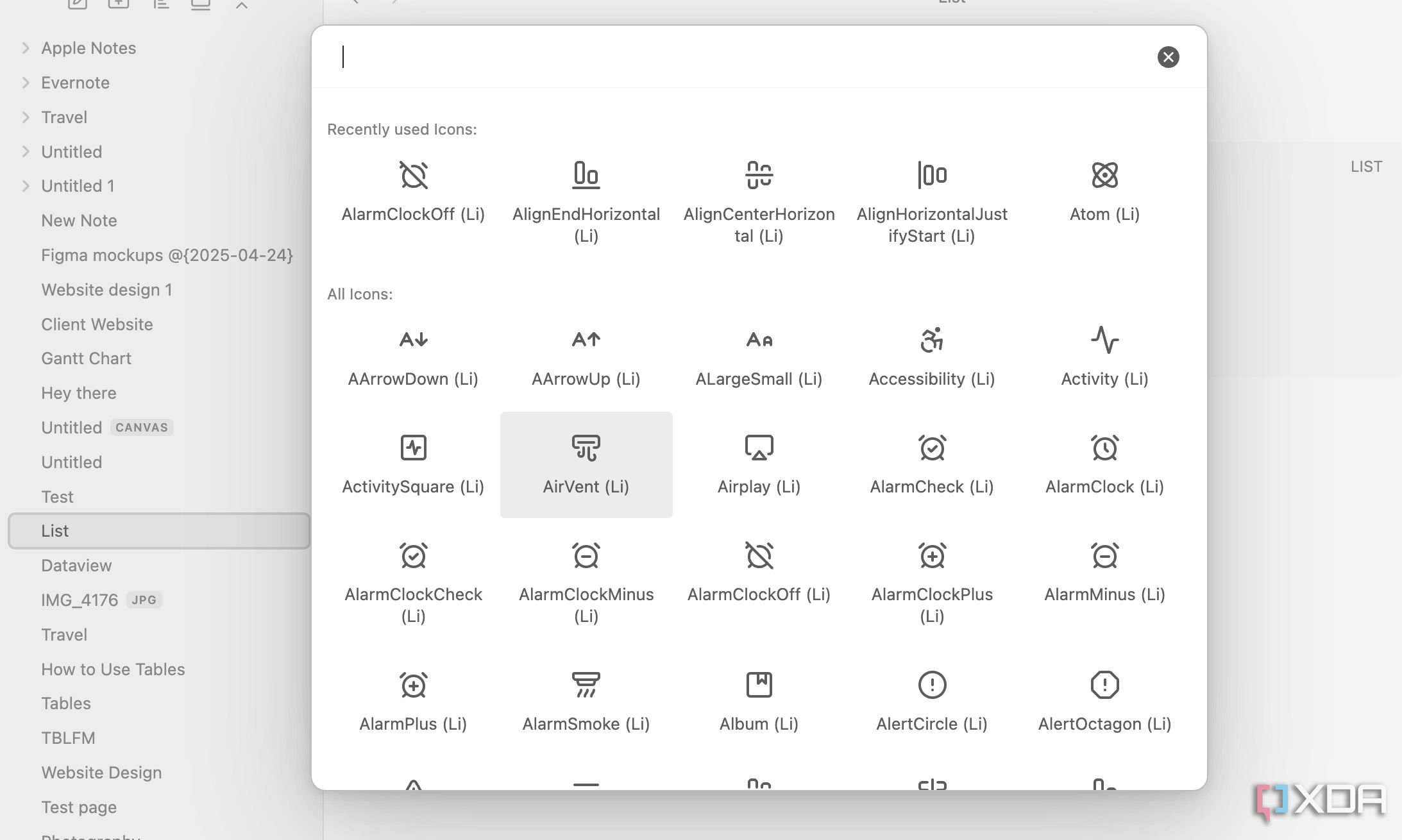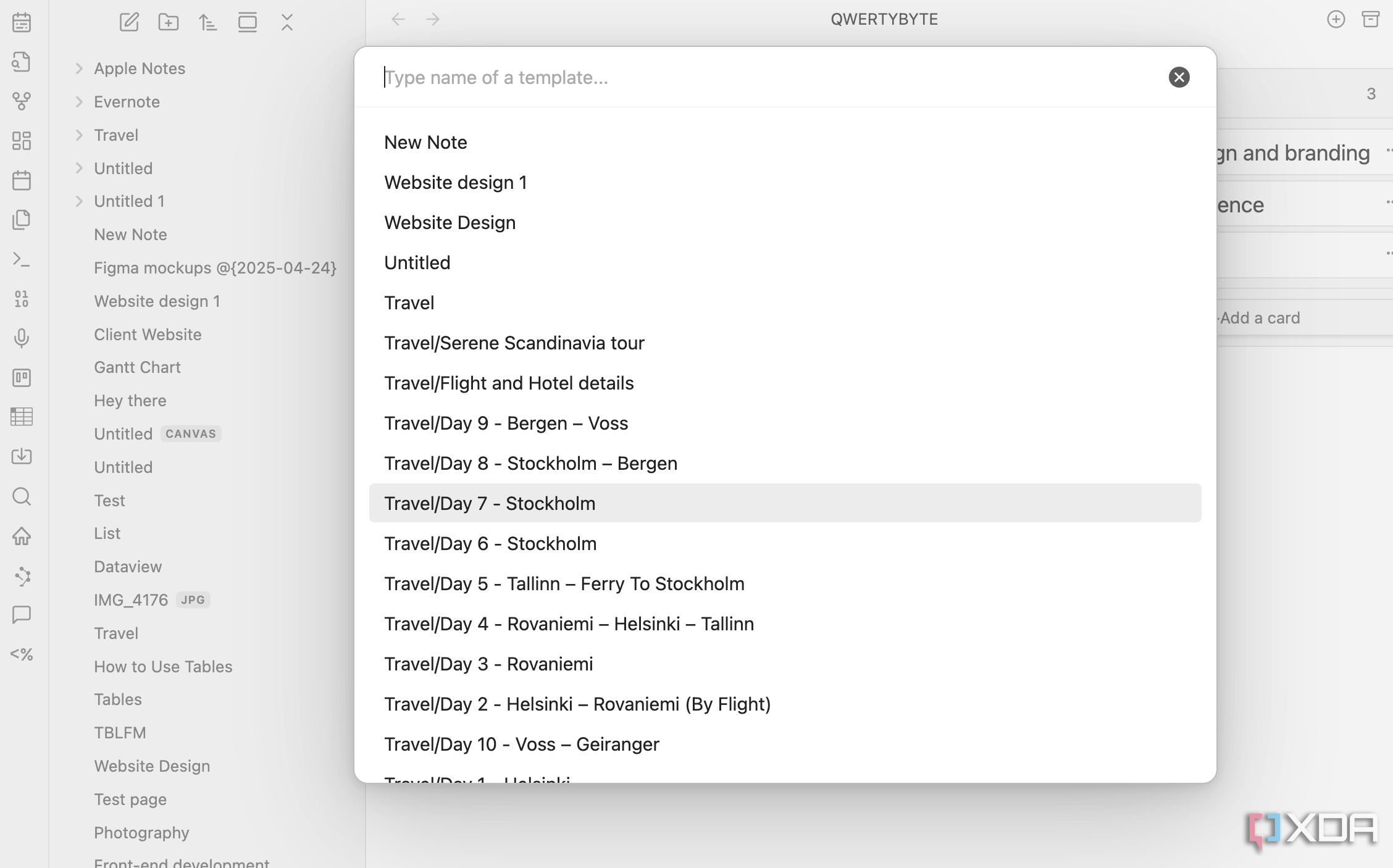When I first started using Obsidian, it felt like a blank canvas. While its core functionality is robust, the true power of Obsidian lies in its incredible community-built plugins. These add-ons have transformed my barebone vaults into a highly customized and efficient personal knowledge management powerhouse.
There is no shortage of third-party Obsidian plugins. After countless hours of exploring and experimenting, I’ve curated a list of add-ons that have significantly impacted my workflow.

Related
I replaced all productivity tools with Obsidian for a month and here is how it went
My 30-day Obsidian experiment
6
Kanban
Manage your persona projects
Kanban is easily one of my most used Obsidian plugins. Since I’m switching from Notion, I missed having Kanban boards from day one. Obsidian only supports basic tables, which is insufficient for my personal projects. As the name suggests, the Kanban plugin unlocks Kanban boards right into my Obsidian notes.
I can create different columns, insert tasks, dates, and use the familiar drag-and-drop method to fly through my tasks. There is also an option to switch between different views. I must say that the Kanban plugin works seamlessly with existing Obsidian features. You can create a new note out of any task, use split view to refer to other notes, and even save it offline to avoid unauthorized access.
Of course, Kanban plugin can’t replace dedicated project management tools like Trello and Asana, but it’s good enough to manage small projects from the comfort of your vaults.
5
Dataview
Treat your notes like a database
Before Dataview, my notes were just that – individual files, linked together, but still kind of static. Then I discovered the Dataview plugin. It basically converts my vault into a database. I can now treat it as a search engine and fly through my notes. It does require a learning curve, though.
Suppose you are writing a book in Obsidian and want to find notes within a specific section that talk about the main characters. You can run the dataview query to find such notes in no time. These are very basic examples, but they demonstrate the fundamental power of Dataview to query and display information stored in your notes in dynamic and organized ways. Check out my post below to learn more about the Dataview plugin in Obsidian.

Related
3 reasons you should be using Obsidian’s Dataview plugin for dynamic note organization
Level up your Obsidian game with Dataview
4
Tasks
Unlock task management in Obsidian
Alright, let’s talk about the Tasks plugin for Obsidian. For me, this plugin has been a game-changer in bridging the gap between my notes and my to-dos. It essentially transforms your Obsidian vault into a surprisingly powerful task management system, all within the familiar Markdown environment.
The plugin provides various ways to interact with your tasks directly within the displayed lists. You can check tasks as done, change their priority, and sometimes even modify their due dates directly from the query results. When you create a checklist, a context menu appears to assign relevant properties to your tasks.
3
Iconize
Iconize your vault
Iconize adds a visual touch to my Obsidian vault. Instead of just relying on text labels in your sidebar, file explorer, or even within your notes, you can add meaningful icons. This can make navigation much quicker and more intuitive. For example, I might use a house icon for my Home note, a folder icon with a pen for my Writing folder, or a calendar icon for my daily notes.
While it might seem like a small addition, well-chosen icons can greatly enhance the overall user experience in Obsidian.
2
Homepage
Your go-to page when you launch Obsidian
Homepage plugin acts as a virtual front door for my Obsidian vault. Instead of just landing on the last note I was working on (which can sometimes be a random thought or a deeply nested file), the Homepage plugin lets me designate a specific note as my starting point every time I open Obsidian.
My homepage note has evolved over time into a personalized dashboard. I use it to list my active projects, display daily tasks, show recent notes, and other essential project notes. By having this central point, I find it much easier to jump into my work with intention. There is even an option launch a dedicated graph view using the Homepage plugin. It’s a must-have plugin for anyone looking to set up a local wiki in Obsidian.
1
Templater
Fills in the major gap in Obsidian
Templater has been a huge time-saver in my workflow. As the name suggests, it lets you create a template out of any note in your vault. I can simply click the Templater icon from the sidebar, select an existing note, and import its content in no time. I can even select another note and keep expanding the existing one.
By default, Templater displays all notes from the vault. However, there is an option to limit the search to a specific folder as well.
My Obsidian aha! Moment
The beauty of Obsidian lies in its extensibility. While the out-of-box Obsidian experience is good enough for most, it certainly misses the mark in several areas. The plugins above have filled in the gap for my vault. You don’t necessarily need to install every plugin on the list. Start with the ones that suit your needs and preferences, and start building the effective PKM system. Meanwhile, check out my dedicated post if you are completely looking to migrate to Obsidian.
